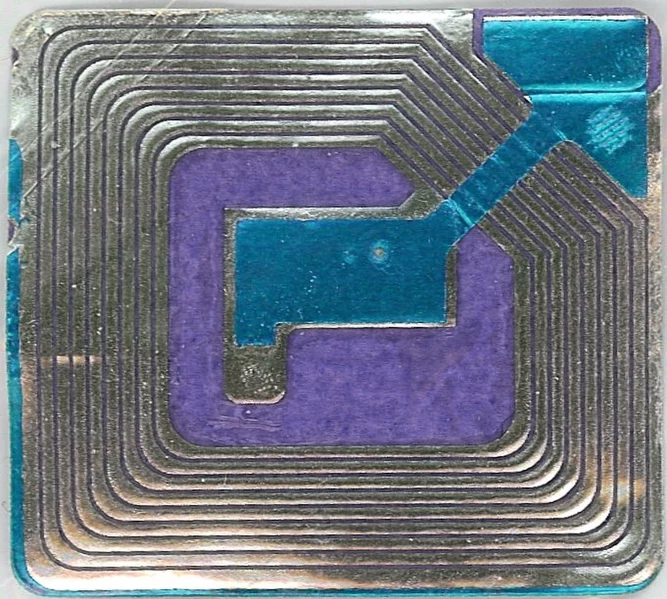-
Apparently, the WEF Wants to Track Our Children with RFID Tags

You are all well-aware of the RFID chips they’ve been using for some time in our products, ranging from foodstuffs to electronic devices. During the Davos meeting in May 2022, the World Economic Forum (WEF) announced its intentions to take that tracking a step further…by placing RFID tags within clothing. They want the tags to be ubiquitous – in every article of clothing.
Radio-frequency identification, or RFID, tags put out a “pulse” that can be read/scanned by an electronic reader.
We’ve all peeled off some of these “macro” tags in our DVD boxes or inside of the happy packages of our products. Until recently, most of these tags were visible, sticking out like the proverbial sore thumb.
Now the game has changed.
The WEF oversimplified things with their statement, but in order to cover the whole gamut of what their true intentions are, we have to delve deeper into it.
Let’s start out by covering POS, or Point of Sale, what appears to be the “happy cash register” in HappyStore, where you shop.
Far from a simple cash register, the POS device is an inventory control computer that uses bar codes to subtract purchased goods from available inventory.
But wait, there’s more! In addition to this, with the Happy Camera recording your purchase directly overhead, they’ve managed to put together a photo/video record of your transaction, tying it in with the computer and whatever form of payment you bought it with.
Isn’t that swell? You paid in cash, but they have a film of that box of .223 ammo you bought, along with the date and time. All of it is further corroborated with the cell phone.
The cell phone: a tracking device that automatically sends out a pulse every four (4) seconds or less, recording your location and tying it into whatever store you’re near and any people who are near you. It is the “internet of things,” with all of the devices chattering and monitoring your activities, your location, and whatever “Muppets” are wandering around in your immediate vicinity.
Snowden exposed it, but the whole country basically ignored it and shopped on.
There’s a company called Swicofil, with a site you can peruse at www.swicofil.com, and they manufacture RFID fibers and yarn. These fibers are washable, flexible, and long-lasting.
Look how easy that is: woven within the garment itself.
To characterize RFID, the low-frequency systems work between 125 to 134 kHz, and they have a limited range to read (4 to 5 inches). The high-frequency systems function at 13.56 MHz, and they work out to a range of about 35 to 40 feet. These are the “basics,” and with the 5 G in place, those ranges are probably increased. UHF frequencies work from 865 to 928 MHz, but the range isn’t specified.
Cost-effectiveness is maintained. However, RFID alone isn’t enough.
This takes us into a whole new avenue…one with frightening ramifications.
(Want to learn how to starve the beast? Check out our free QUICKSTART Guide.)
Biometrics and RFIDs
Meet the Brivo company, specializing in combining biometrics and RFIDs. Their site can be found at www.brivo.com. They suggest a combination of facial recognition software combined with integrated cameras that “compare people entering the camera’s field of view against a database.”
Unspoken is the fact that, with all of these companies, most consumer-puppets consent (willingly or unknowingly) to the release of this stored data under the broad category of “marketing” or “market-derived” information. This means that facial recognition data gathered at HappyStore #1 can be utilized by HappyStore #2, even if the stores are completely dissimilar.
I studied an information sheet put out by Data V Tech entitled “RFID/Biometric Technology Integration,” located at www.datavtech.com. You’ll love this excerpt:
“Radio-frequency Identification (RFID) automatically identifies and tracks tags attached to objects using electromagnetic fields.
Meanwhile, biometric technologies measure people’s biological aspects to identify them. For example, an electromagnetic interrogation pulse from a nearby RFID reader device triggers tags. Then, they transmit digital data, such as an identifying inventory number or employee working hours, back to the reader. Time & Attendance Security Systems, the representative of both RFID and biometric technologies, have proven the effective integration into Epicor Kinetic (ERP) to monitor employee working hours automatically and generate timesheets.”






Login or Register to Leave a Comment